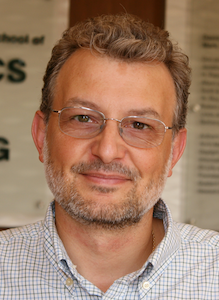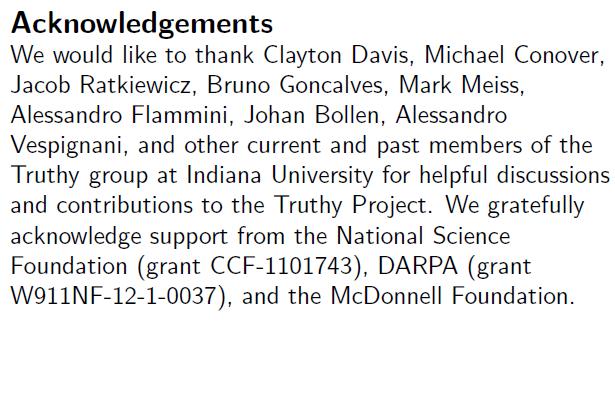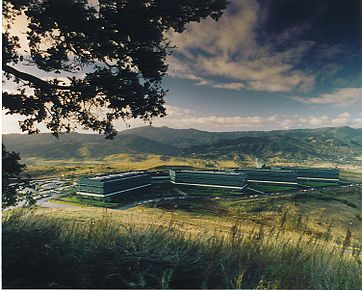
Same DARPA grant also funded social media studies of Occupy Wall Street
By Alan Jones, 1776 Channel
August 27, 2014 – An Indiana University database called ‘Truthy’, designed to surveil “false and misleading ideas…and other social pollution” on the popular social media platform Twitter, received Pentagon funding via a federal grant from the Defense Advanced Research Projects Agency (DARPA), according to a document uncovered by the 1776 Channel.
The American public, which only recently became fully aware of the depth of the NSA’s domestic surveillance programs, may be unaware that their social media activity is not only being monitored, but is being analyzed by complex algorithms developed at top U.S. universities and funded by the Pentagon in an effort to predict the future.

In the acknowledgments section of a paper entitled “Truthy: Enabling the Study of Online Social Networks”, authors Karissa McKelvey and Filippo Menczer of the Center for Complex Networks and Systems Research at Indiana University write:
We gratefully acknowledge support from the National Science Foundation (grant CCF-1101743), DARPA (grant W911NF-12-1-0037), and the McDonnell Foundation.
The McDonnell Foundation was founded in 1950 by the late James McDonnell of defense contractor McDonnell Douglas (later merged with Boeing).

The same DARPA grant number tied to the Truthy project appears to have funded other research projects at Indiana University, including:
• The Rise of Social Bots
• The Geospatial Characteristics of a Social Movement Communication Network
• The Digital Evolution of Occupy Wall Street
The military-industrial complex has a long tradition of funding research at American universities, but in this case, the research subjects and funders are the American people engaged with online social media platforms.
Indiana University Ph.D. thesis: Funded by Facebook and DARPA
Lilian Weng, who hails from China, is one of Professor Menczer’s protégés and worked on the Truthy project. Weng submitted her Ph.D. thesis to the School of Informatics and Computing at Indiana University in April 2014.
One area of focus in Weng’s thesis is “predicting meme virality”.
Whether she is aware of it or not, Weng’s work may be of particular interest to the Pentagon, which for some time has been interested in analyzing social media to predict social unrest.
The Guardian reported in July 2014 that the “U.S. military studied how to influence Twitter users in Darpa-funded research” with “studies focused on Occupy and Middle East protests”.
With research internships at Yahoo! China, eBay, Mozilla and the Facebook Data Science Team posted on her resume, Weng lists “data mining” and “social network analysis” among her areas of interest.
Weng acknowledges:
*This thesis was supported in part by NSF grants IIS-0811994 and CCF-1101743, the project “Information Dynamics in Complex Data Structures” (PRIN), the Lilly Endowment (Data to Insight Center grant), Facebook, the James S. McDonnell Foundation, DARPA Grant W911NF-12-1-0037, and the School of Informatics and Computing at Indiana University, Bloomington.
Like something out of ‘1984’: ‘Collaborator Community Profiling’
Indiana University is not alone among U.S. research universities receiving DARPA grants to study or perform data mining of online social networks.
Wenjun Zhou of the University of Tennessee, Hongxia Jin from the IBM Research Center in Almaden, and Yan Liu of the University of Southern California published a nearly four hundred page paper entitled ‘Community Discovery and Profiling with Social Messages‘, with acknowledged support from DARPA (grant W911NF-12-1-0034).
The team created the Orwelian-sounding COCOMP (Collaborator Community Profiling) model.
In this paper, we aim to automatically discovering (sic) and profiling users’ communities by taking into account both the contacts and the topics. More specifically, we propose a community profiling model called COCOMP, where the communities (sic) labels are latent, and each social document corresponds to an information sharing activity among the most probable community members regarding the most relevant community issues. Experiment results on several social communication datasets, including emails and Twitter messages, demonstrate that the model can discover users’ communities effectively, and provide concrete semantics.

Although the authors focused on the applicability of their COCOMP model to the world of work and employee organizations, the potential adoption of the research by the National Security Agency (NSA), the Department of Homeland Security (DHS), or their research teams’ sponsor, the Department of Defense, cannot be discounted.
The American people have no idea just how carefully they are being watched.







… [Trackback]
[…] Find More here|Find More|Find More Informations here|Here you will find 13845 additional Informations|Informations to that Topic: 1776channel.com/2014/08/27/tech/surveillance/truthy-twitter-database-funded-by-pentagons-darpa/ […]
… [Trackback]
[…] Find More on|Find More|Find More Infos here|Here you can find 45414 more Infos|Informations to that Topic: 1776channel.com/2014/08/27/tech/surveillance/truthy-twitter-database-funded-by-pentagons-darpa/ […]
… [Trackback]
[…] Read More here|Read More|Read More Infos here|There you can find 21688 additional Infos|Informations to that Topic: 1776channel.com/2014/08/27/tech/surveillance/truthy-twitter-database-funded-by-pentagons-darpa/ […]
… [Trackback]
[…] Read More on|Read More|Read More Infos here|Here you will find 14369 additional Infos|Infos to that Topic: 1776channel.com/2014/08/27/tech/surveillance/truthy-twitter-database-funded-by-pentagons-darpa/ […]
… [Trackback]
[…] Find More on|Find More|Read More Informations here|There you will find 75155 additional Informations|Infos on that Topic: 1776channel.com/2014/08/27/tech/surveillance/truthy-twitter-database-funded-by-pentagons-darpa/ […]
… [Trackback]
[…] Find More here|Find More|Find More Infos here|Here you can find 33999 additional Infos|Informations to that Topic: 1776channel.com/2014/08/27/tech/surveillance/truthy-twitter-database-funded-by-pentagons-darpa/ […]
… [Trackback]
[…] Read More here|Read More|Find More Infos here|Here you can find 36614 more Infos|Informations to that Topic: 1776channel.com/2014/08/27/tech/surveillance/truthy-twitter-database-funded-by-pentagons-darpa/ […]
… [Trackback]
[…] Find More here|Find More|Read More Informations here|There you will find 48927 additional Informations|Informations to that Topic: 1776channel.com/2014/08/27/tech/surveillance/truthy-twitter-database-funded-by-pentagons-darpa/ […]
… [Trackback]
[…] Find More on|Find More|Read More Infos here|Here you will find 19235 more Infos|Informations to that Topic: 1776channel.com/2014/08/27/tech/surveillance/truthy-twitter-database-funded-by-pentagons-darpa/ […]
… [Trackback]
[…] Read More on|Read More|Read More Informations here|There you can find 42991 additional Informations|Infos to that Topic: 1776channel.com/2014/08/27/tech/surveillance/truthy-twitter-database-funded-by-pentagons-darpa/ […]
… [Trackback]
[…] Find More here|Find More|Find More Informations here|Here you can find 66662 more Informations|Informations on that Topic: 1776channel.com/2014/08/27/tech/surveillance/truthy-twitter-database-funded-by-pentagons-darpa/ […]
… [Trackback]
[…] Find More on|Find More|Read More Informations here|There you will find 3959 more Informations|Infos to that Topic: 1776channel.com/2014/08/27/tech/surveillance/truthy-twitter-database-funded-by-pentagons-darpa/ […]
… [Trackback]
[…] Find More here|Find More|Find More Informations here|Here you can find 74115 additional Informations|Infos on that Topic: 1776channel.com/2014/08/27/tech/surveillance/truthy-twitter-database-funded-by-pentagons-darpa/ […]
… [Trackback]
[…] Read More on|Read More|Find More Infos here|Here you will find 57687 more Infos|Infos on that Topic: 1776channel.com/2014/08/27/tech/surveillance/truthy-twitter-database-funded-by-pentagons-darpa/ […]
… [Trackback]
[…] Find More on|Find More|Read More Infos here|Here you can find 8867 more Infos|Informations to that Topic: 1776channel.com/2014/08/27/tech/surveillance/truthy-twitter-database-funded-by-pentagons-darpa/ […]
… [Trackback]
[…] Find More here|Find More|Read More Informations here|There you can find 12474 more Informations|Informations to that Topic: 1776channel.com/2014/08/27/tech/surveillance/truthy-twitter-database-funded-by-pentagons-darpa/ […]
… [Trackback]
[…] Find More on|Find More|Read More Infos here|Here you can find 65445 additional Infos|Infos on that Topic: 1776channel.com/2014/08/27/tech/surveillance/truthy-twitter-database-funded-by-pentagons-darpa/ […]
… [Trackback]
[…] Read More on|Read More|Find More Informations here|There you will find 19806 additional Informations|Informations to that Topic: 1776channel.com/2014/08/27/tech/surveillance/truthy-twitter-database-funded-by-pentagons-darpa/ […]
… [Trackback]
[…] Read More here|Read More|Read More Infos here|There you will find 36784 additional Infos|Informations to that Topic: 1776channel.com/2014/08/27/tech/surveillance/truthy-twitter-database-funded-by-pentagons-darpa/ […]
… [Trackback]
[…] Read More on|Read More|Read More Informations here|There you can find 91468 additional Informations|Infos on that Topic: 1776channel.com/2014/08/27/tech/surveillance/truthy-twitter-database-funded-by-pentagons-darpa/ […]
… [Trackback]
[…] Find More here|Find More|Read More Informations here|Here you will find 14487 more Informations|Informations to that Topic: 1776channel.com/2014/08/27/tech/surveillance/truthy-twitter-database-funded-by-pentagons-darpa/ […]
… [Trackback]
[…] Find More here|Find More|Find More Infos here|There you can find 74141 additional Infos|Informations on that Topic: 1776channel.com/2014/08/27/tech/surveillance/truthy-twitter-database-funded-by-pentagons-darpa/ […]
… [Trackback]
[…] Read More here|Read More|Find More Infos here|Here you can find 80231 additional Infos|Infos on that Topic: 1776channel.com/2014/08/27/tech/surveillance/truthy-twitter-database-funded-by-pentagons-darpa/ […]
… [Trackback]
[…] Find More on|Find More|Read More Infos here|There you will find 19944 more Infos|Infos to that Topic: 1776channel.com/2014/08/27/tech/surveillance/truthy-twitter-database-funded-by-pentagons-darpa/ […]
article rewriter wizard blackhat
yklquexmt nsoql xabcwfv xefp rvmxjxylhznsrlr
the chinese now working for darpa is what I got out of this story. We now let foreigners design the NSA software. Maybe the chinese is a real “student” but me I wouldnt trust her, but thats just me, something about communists bother me.
Why not list all the legitimate reasons the Pentagon would like to know when a country might undergo civil unrest? There was a NEO (Noncombatant Evacuation Operation) of Lebanon in 2007, and if ISIS starts trying to drive the Christians in Beirut out, maybe there will be again. There was an evacuation of Libya this year. Maybe informing Americans abroad that “hey folks, might want to get out while you still can.” is what you would expect of your government?
Like anything else, it isn’t the capability that is bad, only the potential misuse of the capability. And now that you know it is there, you can modify your behaviour to avoid getting caught up in it.
[…] And you thought otherwise? […]
Comments are closed.